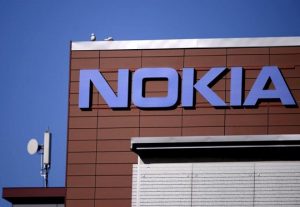Nokia launches airscale 5G products powered by ReefShark technology

An avid reader, analytical writer and consistent content creator with several enlightening articles and reports. He is currently a journalist , Commodities, Agriculture and Technology at business a.m. newspaper. Email: amugedavido@gmail.com. Tel: +234 706 930 4947
June 30, 2021796 views0 comments
Finnish multinational telecommunications company, Nokia, has announced the global launch of its latest airscale 5G products covering baseband, 8T8R remote radio heads, and multiple-input and multiple-output (MIMO) active antennas with digital beamforming.
 The innovative solutions, the company stated, are powered by the latest generation of its Reef Shark System-on-Chip (SoC) chipsets, aimed at delivering the highest capacity and network performance while enabling efficient deployments and operation. The ReefShark chipsets are also expected to play a critical role in future Artificial Intelligence (AI) and Machine Learning (ML) capabilities.
The innovative solutions, the company stated, are powered by the latest generation of its Reef Shark System-on-Chip (SoC) chipsets, aimed at delivering the highest capacity and network performance while enabling efficient deployments and operation. The ReefShark chipsets are also expected to play a critical role in future Artificial Intelligence (AI) and Machine Learning (ML) capabilities.
The 32TRX, one of the newly released products, is described as the industry’s lightest, at 17kg, simplifying and speeding up site deployments. Notably, this low weight is achieved at the same time as supporting high radio frequency bandwidth and delivering high radio frequency power output, without compromise.
Nokia also introduced its new SoC-based baseband plug-in cards to boost the capacity of the AirScale System Module. The company added that the new ReefShark-powered plug-in cards deliver up to eight times more throughput and serve up to eight times more cells compared to previous generations.
In addition to this, they are easily installed and simplify the upgrade and extended operation of all AirScale deployments, can support 90,000 connected users simultaneously and has 84 Gbps throughput. The highly efficient ReefShark powered plug-in cards also reduce power consumption by up to 75 percent.
Nokia Single RAN software also includes 5G, accelerating 5G rollouts and cutting overall radio access network TCO (Total Cost of Ownership), by unlocking network efficiencies with common transport, common operability, common software delivery, and increased hardware sharing.
The combination of Nokia’s Single RAN software and the new baseband plug-in cards also offer multi-mode (2G, 3G, 4G, 5G) and multi-band which additionally supports the latest fronthaul interfaces (eCPRI) on a single baseband platform, simplifying the network and lowering costs.
Commenting on the newly released products, Patrick Filkins, senior research analyst, IoT and Mobile Network Infrastructure, IDC, said 5G networks are absolutely critical for improving network capacity and performance, particularly when higher bandwidth is in demand and Nokia’s new portfolio addresses these concerns by enabling mobile operators to flexibly scale capacity while helping to smoothly transition to 5G from existing technologies easily and cost-effectively.
According to Filkins, the integration of Nokia’s ReefShark SoCs across both radio and baseband boosts performance and capacity and the new massive MIMO antennas set a new benchmark for low weight without compromising on performance.
“These solutions will help mobile operators to address the increasingly dynamic mobile services space that urgently requires more capacity,” he added.
Tommi Uitto, president of mobile networks, Nokia, said the new generation of ReefShark-powered AirScale radio and baseband products is evidence of the successful transformation of the company’s business and ability to deliver market-leading products to global customers.
Uitto noted that Nokia’s new portfolio enables communication service providers to offer both consumer and enterprise customers with cutting-edge 5G experiences with premium speeds, capacity, and connectivity underpinned by seamless, simple, and efficient ‘plug-in’ deployment.
“Our new AirScale products are O-RAN ready. They consume less energy and highlight our commitment to climate change. We’re excited to see our customers deploying these products and see the transformative impact of 5G technology,” he said.
